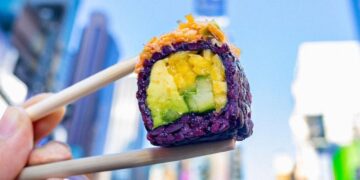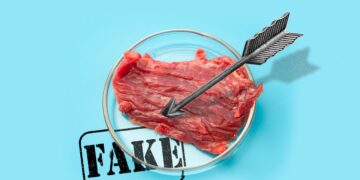[ad_1]
In case you are a budding scholar of positive wine, then the previous few days certainly appeared a momentous and instructive passage of time. In spite of everything, it’s not day-after-day {that a} bottle of Cape wine, the 1821 Grand Constance candy wine from Constantia, in all probability destined for Napoleon’s very personal palate, is offered at public sale for over £20 000 kilos or circa R420 000 rand. An unimaginable achievement on the Cape Fine & Rare Wine Auction that even had the eagle-eyed collectors of Europe watching and considering proceedings in awe. For all of the nay-sayers and South African positive wine public sale sceptics, I’m happy to see that a few of them are lastly beginning to acknowledge the true public sale potential of the previous classic Cape gems and are beginning to eat a little bit little bit of humble pie. For if there may be one factor I’ve learnt over the previous 20-plus years of shopping for and promoting positive wine within the tumultuous UK market, it’s {that a} really particular wine, that’s usually acknowledged to be not solely traditionally uncommon but in addition confirmed to be nonetheless eminently drinkable and ageable, will virtually actually appeal to a big price ticket at public sale. This price ticket is one thing we have now lengthy been trying to see hung across the neck of one of many Cape’s most well-known vinous creations.

Casa Ferreirinha Barca-Velha 2011.
In actuality, everybody concerned within the day-to-day South African positive wine commerce has grown up coveting the previous historic candy wines of Vin de Constance and neighbour Grand Constance, and have recognized that these wines are internationally revered vinous treasures, liquid historical past books that mark the inspiration and institution of South Africa’s nice positive wine trade heritage. In London we’re spoilt by the provision of positive wine and positive wine experiences that we are able to encounter on an virtually every day foundation. For, as I alluded to earlier, these previous few days weren’t solely a momentous second for the Cape positive wine trade, right here in London we too received to witness and style one of the vital extremely anticipated new positive wine releases of the 12 months for the entire of the Western European positive wine market – the brand new launch of the Casa Ferreirinha Barca-Velha purple wine from the Douro in Northern Portugal.
The creation of the Douro’s first desk wine was left to one in all Casa Ferreirinha’s true visionaries, Fernando Nicolau de Almeida, who met the well-known oenologist Emile Peynaud when he visited Portugal within the late Forties and confirmed him his experimental unfortified purple wines. Impressed by the standard of those wines, Peynaud suggested Nicolau de Almeida to pursue his dream of manufacturing positive Douro reds and to embark on a tour of the wine areas of Bordeaux, Burgundy and Rioja to review their trendy winemaking strategies. Nicolau de Almeida returned to the Douro decided to place into apply every thing that he had learnt and in 1952, he produced the primary ever classic of Barca Velha. Although simpler stated than finished within the sizzling Douro of the Nineteen Fifties, temperature management proved to be key, together with sourcing grapes from a spread of various excessive altitude winery websites (as much as 600 metres) to realize stability and freshness, one thing which remains to be a cornerstone of the Casa Ferreirinha winemaking philosophy right now.
To at the present time, solely three males have held the distinguished submit of Casa Ferreirinha head winemaker and each of Nicolau de Almeida’s successors learnt the ropes from him. Luis Sottomayor is now on the winemaking helm and restrains the Douro’s pure exuberance to supply wines which have a vibrant freshness allied to an exquisite texture and depth. However there may be additionally a extra mental aspect to the manufacturing and choice of the Barca-Velha wines, one which has solely resulted in 20 vintages being produced because the maiden classic in 1952. As soon as the wines are vinified on the Quinta da Leda vineyard within the Douro Superior, they’re then transported to the cellars in Vila Nova de Gaia the place they’re usually aged for 18 months in French oak barrels, 60% of that are new. The barrels are then rigorously monitored and tasted recurrently by Luis and his crew earlier than the ultimate mix is assembled from a choice of the easiest barrels. Aged for a number of years in bottle previous to launch, the tasting and evaluation continues and solely after cautious consideration, is the choice made by Luis to declare the wine a Barca-Velha or else “declassify” it to the Casa Ferreirinha Reserva Especial. A nerve-racking course of when you’ve gotten the load of historical past in your shoulders, the expectation of supreme high quality and the data that the circa 25 000 to 30 000 bottles of wine will both be christened a £450 Barca-Velha collectable icon or a £150 pound unofficial second wine. I’ll let all you newbie accountants on the market do the maths!

By the point Luis had made the choice to declare the 2011 classic a hallowed Barca-Velha in December 2019, this wine had already spent over eight years within the cellars of Casa Ferreirinha underneath fixed evaluation. Whereas it’s not simple and even proper to attract parallels, it did remind me in some ways of among the late nice classic releases from South Africa, primary in my thoughts being the fabled Alto Cabernet Sauvignons from legendary winemaker Hempies du Toit. It wasn’t till the industrial accountants ripped up the social contract within the late Nineties that vintages of Alto had been by no means launched to market earlier than that they had been aged no less than six years within the Alto cellars in Stellenbosch. Whereas not-too-distant neighbour Meerlust didn’t maybe adhere to fairly such a strict maturation roadmap, they too typically solely noticed their flagship Rubicon purple wines launched from ageing in bottle within the Bergkelder cellars after 5 – 6 years, if no more. It’s this ageing foresight, mixed with conventional winemaking that nearly actually contributed to establishing many of those manufacturers and others alike as among the most iconic within the South African positive wine panorama.
Whereas Casa Ferreirinha and the Barca-Velha model is now owned however the Portuguese wine conglomerate Sogrape, it does appear as if the winemaking heritage and ageing ideas of Barca-Velha are safe in the intervening time. Sadly, for us South Africans who lengthy for a return to the previous positive wine days of late-release Bordeaux blends and Cabernet Sauvignons, the Covid-19 epidemic and the ensuing cashflow traumas inflicted have virtually actually put paid to any chance of any of South Africa’s nice icon estates considering returning to a classical late-release coverage. For one factor, the accountants will merely not permit it. But it surely actually charms me realizing that on the market within the international cutthroat world of positive wine, there are nonetheless a number of wine estates like Vega Sicilia and Barca-Velha that respect the worth of custom and the benefit of late launched, cellar-aged positive wines.
- Greg Sherwood was born in Pretoria, South Africa, and because the son of a profession diplomat, spent his first 21 years travelling the globe together with his mother and father. With a Enterprise Administration and Advertising diploma from Webster College, St. Louis, Missouri, USA, Sherwood started his working profession as a commodity dealer. In 2000, he determined to make extra of a long-held curiosity in wine taking a place at Handford Wines in South Kensington, London and is right now Senior Wine Purchaser. He turned a Grasp of Wine in 2007.
Assist us out. In the event you’d like to indicate a little bit love for unbiased media, we’d tremendously respect it. To make a monetary contribution, click on here. Bill accessible upon request – contact information@winemag.co.za
[ad_2]
Source link







